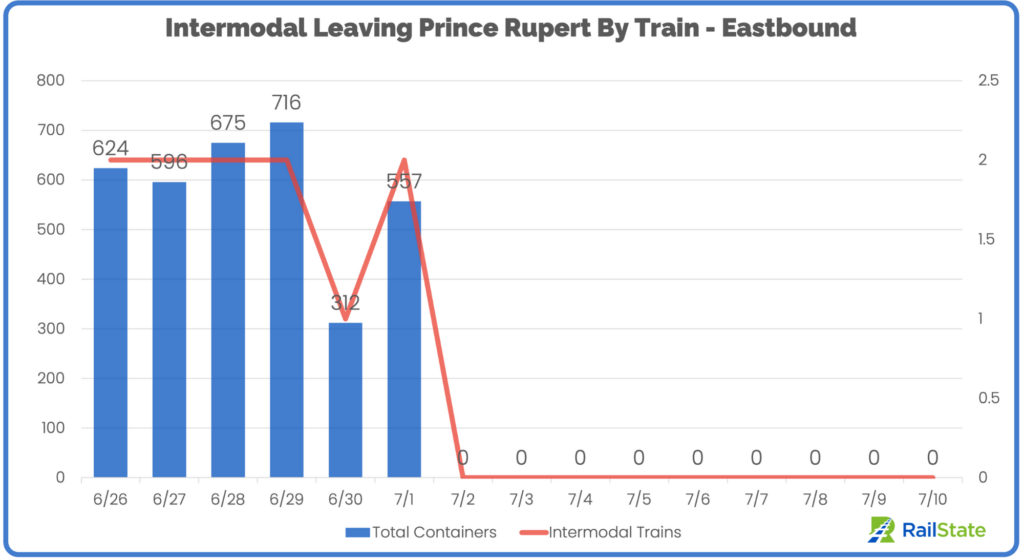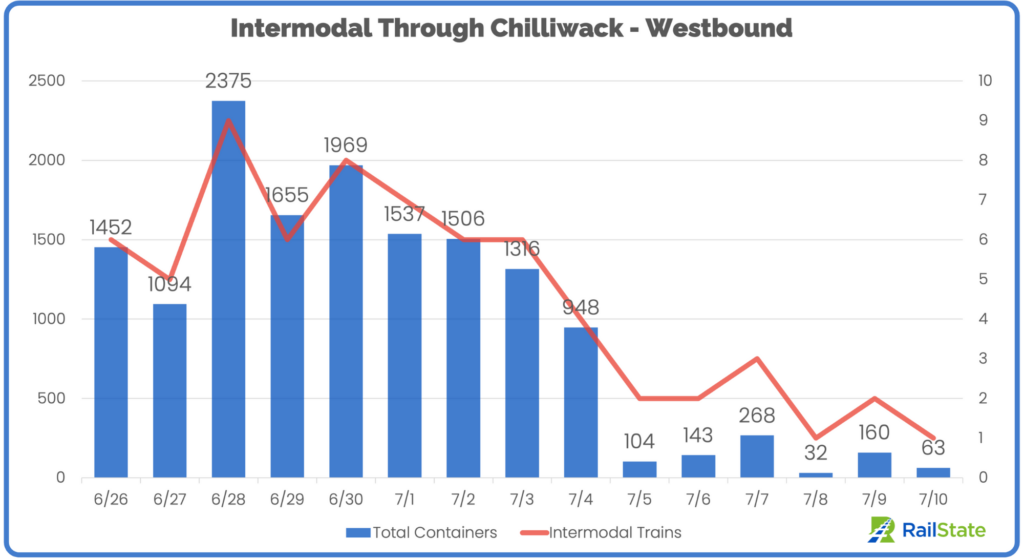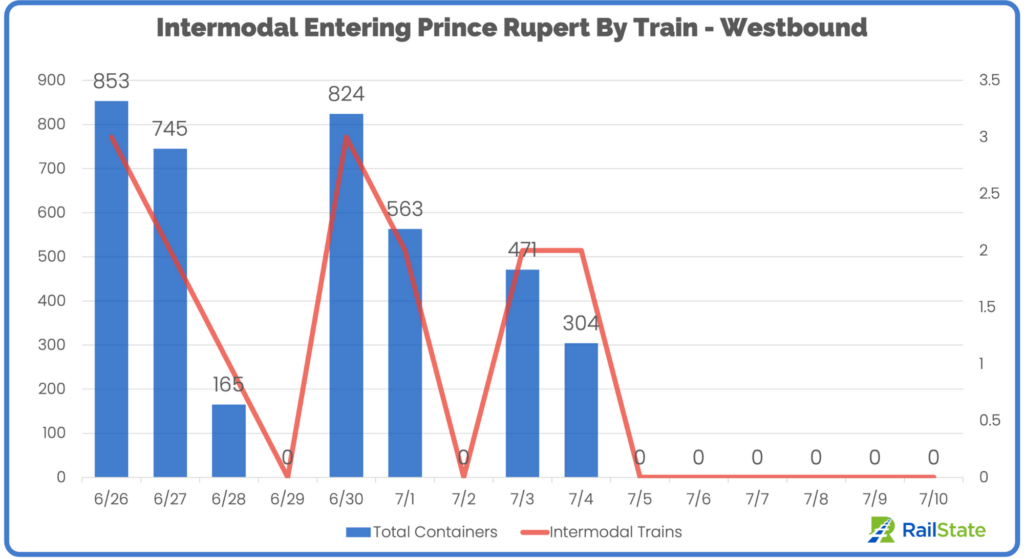Western Ports Strike Special Report – Impact on Intermodal – Data Through July 10

RailState, the rail industry’s only provider of real-time rail network visibility, independently tracks all freight rail movements across Canada, and as such, is uniquely positioned to observe the initial impacts on rail from the strike at the B.C. ports.
As the strike by the International Longshore and Warehouse Union Canada (ILWU Canada) enters its second week, RailState is closely monitoring the flows of rail traffic in the western ports region and the impact on rail traffic throughout Canada and into the United States.
The most dramatic change has been in intermodal. All non-domestic intermodal rail traffic into and out of the Ports of Vancouver and Prince Rupert has stopped.
Port of Vancouver
Since the strike started, the volume of imported containers moving on rail out of the Port of Vancouver has plummeted. (The only movement of 20’ and 40’ containers out of the port over the past week has been on domestic intermodal trains.)
Likely in anticipation of the strike, containers were loaded on trains before July 1 and the trains moved out of the port on the day the strike began, explaining the higher volumes of trains and container movement on July 1.
In June, there were 1,182 imported containers moving eastbound out of the port each day.

Entering the Port on Rail
The railroads stopped taking orders for most exports out of the western ports and we have seen westbound intermodal to the ports for export mostly come to a stop. Drops in this traffic would be expected to lag behind eastbound movements as shippers change routes and shipments already enroute arrive on the west coast. The vast majority of shipments from eastern Canada already enroute to the west coast when the strike began would have arrived by now.
The Port of Vancouver typically sees an even balance of containers moving into and out of the port. In June, there were 1,181 containers moving on rail westbound into the port each day on average.

Prince Rupert
Leaving the Port on Rail
Intermodal rail traffic eastbound out of Prince Rupert completely halted once loaded trains exited on the first day of the strike.
Prince Rupert sees less intermodal traffic than the Port of Vancouver and, in June, the port averaged 543 imported containers moving eastbound on rail each day.

Entering the Port on Rail
Traffic westbound into the port has also slowed and there is now no intermodal moving into the port by rail.
Last month, the port saw an average of 496 containers moving westbound on rail each day.

Continuous Updates
RailState will provide additional updates on the extended impact of the strike in the coming days and throughout the duration of the work stoppage, including reports on where rail traffic is moving, movements of bulk commodities, and flows southbound into the United States.
Subscribe here to receive these free reports as they are released. For shippers, analysts, and others looking for more information on rail network visibility and navigating rail operations during this and other disruptions, please reach out to contact@railstate.com. disruptions, please reach out to contact@railstate.com.
